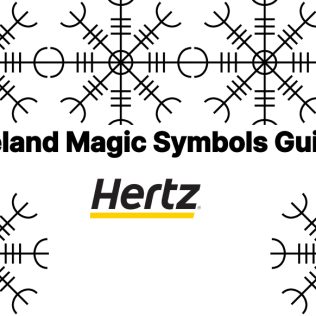Iceland is steeped in fascinating folklore and a deep connection to the mystical. For centuries, the Norse Vikings who settled this island nation relied on a unique system of symbols, known as galdrastafir, for guidance, protection, and various blessings.
These intricate symbols believed to possess magical properties, were etched onto amulets, carved into homes, and even woven into clothing. In this article, we will delve into the world of Iceland magic symbols, beginning with the iconic Aegishjalmur, also known as the Helm of Awe.
We’ll explore its rich history, symbolism, and purported magical uses, offering a glimpse into the beliefs and practices of the Viking Age. We will also look at a range of other Icelandic magic symbols, each with its own unique purpose and meaning.
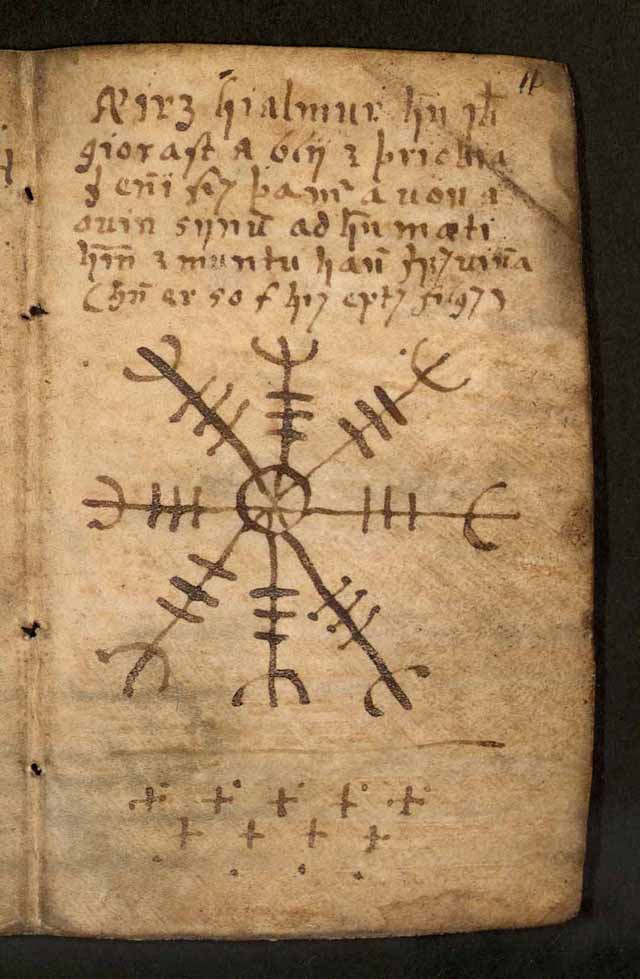
What Does Aegishjalmur Mean? Where Did this Symbol Come From?
The word Aegishjalmur translates to “helm of awe” in Old Norse. “Aegis” refers to a shield or protective covering, while “hjalmr” signifies a helmet. So, the symbol itself embodies the concept of protection and awe-inspiring power. It was believed to ward off harm, instill fear in enemies, and grant the bearer courage and resilience.
While the Aegishjalmur is often associated with Viking culture and Norse mythology, there’s no concrete evidence of its usage during the Viking Age.
While the term “Aegishjalmr” appears in the Völsunga saga in reference to a magical object owned by the dragon Fafnir, the specific description doesn’t match the modern Aegishjalmur symbol.

The first documented appearance of the symbol comes from the 19th century in the Huld manuscript, a collection of Icelandic magical symbols.
How to Pronounce Aegishjalmur
The Icelandic language is very unique, with roots in Old Norse and little outside influence since then. For that reason, it can be challenging to figure out the pronunciation of Icelandic words. So, let’s break down how to pronounce Aegishjalmur into three parts.
- Ægi: This is pronounced similarly to “eye” in English but with a slightly longer “e” sound.
- shjalm: This part is pronounced “yowlm,” with the “ow” rhyming with “cow” and the “lm” at the end sounding similar to “palm.”
- ur: This final part is pronounced like the “er” in “fur.”
Another Famous Iceland Magic Symbol: Vegvisir
The Vegvísir, sometimes called the Icelandic compass, Viking compass or Wayfinder, is a fascinating symbol with a unique history. The word Vegvisir comes from Old Icelandic, literally meaning “way shower” or “guide.”
Despite its popular association with Vikings, the Vegvisir is a relatively recent invention. The oldest known source dates to the Huld Manuscript, the same as Aegishjalmur, which was compiled in Iceland around 1860.

The Vegvisir has eight-pointed staves radiating from a central point. While the exact meaning of each stave is debated, the overall symbol is believed to represent guidance and protection when traveling, especially during harsh weather or unfamiliar terrain. Some interpretations associate the eight staves with eight directions, ensuring the bearer never loses their way.
Difference between Aegishjalmur and Vegvisir
Aegishjalmur and Vegvisir have clear similarities when it comes to their designs, but their meanings are significantly different. Both symbols were originally documented in the Huld Manuscript, which was created by Geir Vigfusson in Akureyri in 1860. Aegishjalmur is a stave for protection and strength in battle, while Vegvisir acts as a guide for travelers, ensuring safe passage during harsh journeys or unfamiliar paths. So, although they look similar, they serve very different purposes.

Aegishjalmur
(the Helm of Awe)

Vegvisir
(the guide-wayfinder)
Other Icelandic Magic Symbols
While the Helm of Awe and the Wayfinder are well-known Icelandic symbols, there are many others with unique purposes. From protecting against foxes to summoning the dead, Icelandic magic symbols have a rich history.
Ginfaxi and Gapaldur
Ginfaxi and Gapaldur are symbols used in Icelandic wrestling for success. Ginfaxi represents fertility and Gapaldur symbolizes stability. Together, they were believed to ensure victory. They were hidden on the wrestler, Ginfaxi under the left foot’s toes, and Gapaldur under the right foot’s heel.
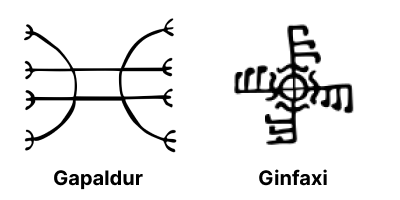
Yggdrasil
Yggdrasil, a giant tree from Norse mythology, connects different worlds and represents life’s interconnectedness. Though not specifically Icelandic, settlers brought these beliefs to Iceland, where Yggdrasil remains a cultural symbol, featured in art and attractions like “The Maze of Yggdrasil” in Reykjavik.
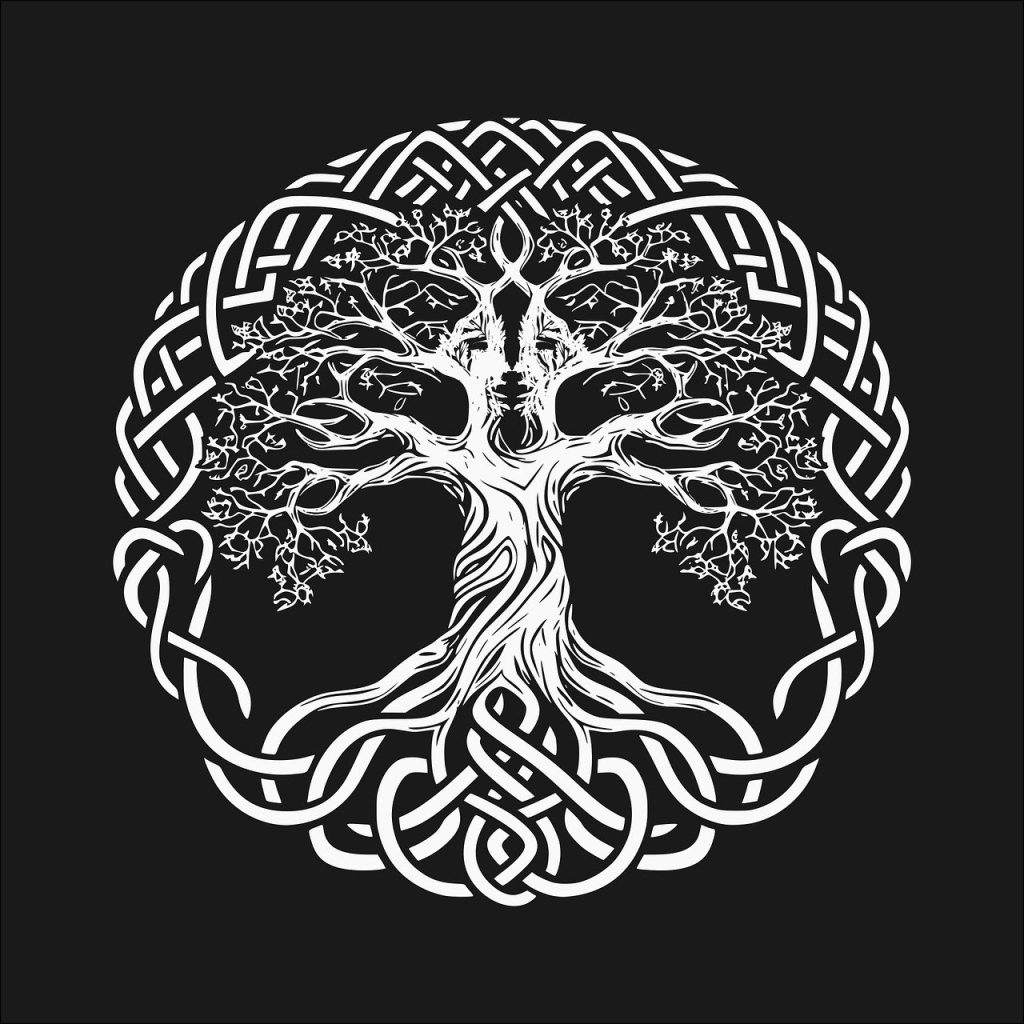
Veldismagn
Veldismagn is known for strength and protection. It was used to guard against harm and enhance resilience. Sometimes, it was used for safe travels, and it could be drawn in blood for more power.
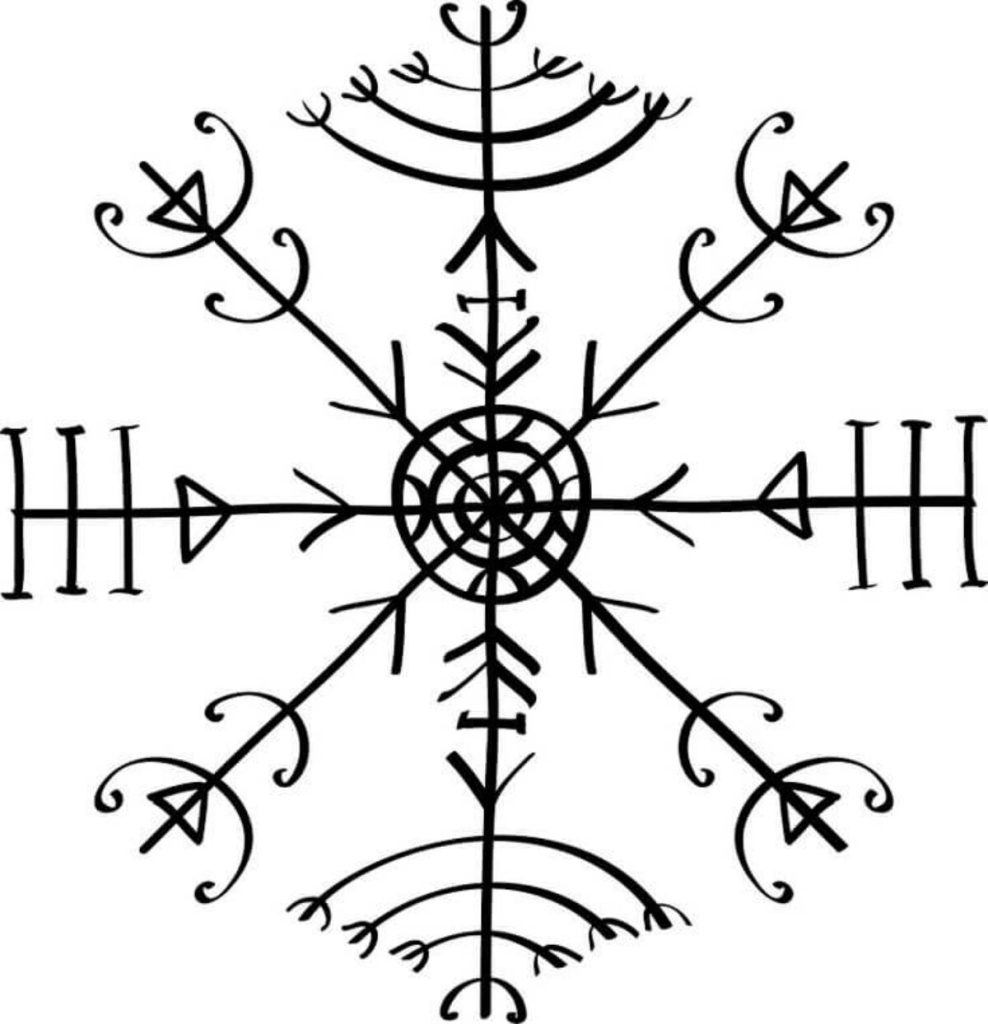
Kaupaloki
Kaupaloki aimed to ensure success in business and trade. Found in the 17th-century Galdrabók, it was used for favorable transactions.

Veiðistafur
Veiðistafur brought luck in fishing, reflecting Iceland’s deep fishing traditions. It was activated with specific rituals for a successful catch.
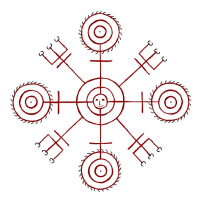
Mjölnir
Mjölnir, Thor’s hammer, symbolizes protection and strength in Norse and Icelandic cultures. Worn as pendants, these symbols represented faith and connection with Thor, and they remain popular today as cultural icons.
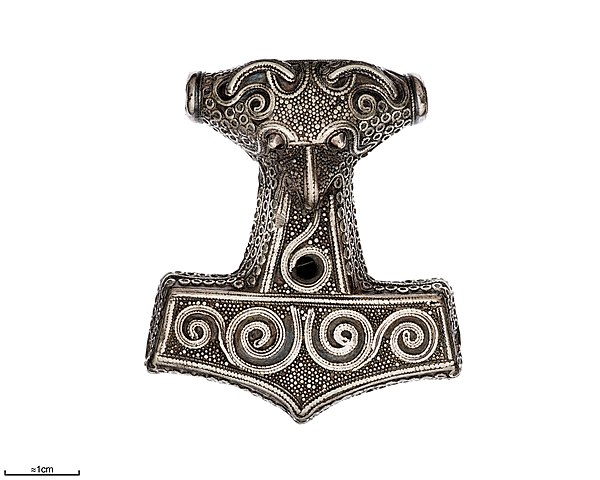
Draumstafir
Draumstafir, or dream stave, was used to influence dreams towards unfulfilled desires. Traditionally, it was placed under a pillow, especially effective on St. John’s Day, for insights or solutions from dreams.

Þjófastafur
Þjófastafur protected against theft. It could reveal a thief’s identity through a ritual involving a wooden bowl, water, and yarrow flowers.

Lásabrjótur
Lásabrjótur, or lock breaker, was used to open locks magically. Following specific instructions and incantations, it could unlock without a key, demonstrating its ancient magic.

Valdemarshafn
Valdemarshafn sought to bring positive attention, happiness, and good luck. Used for improving social standing and attracting success, it’s a symbol of fortune and well-being.

Explore Iceland’s Magical History
The world of Iceland magic symbols is deeply rooted in Norse mythology and Viking folklore on which the country was built. The Aegishjalmur, or Helm of Awe, stands out as an iconic symbol of protection and awe-inspiring power, while Vegvisir serves as a compass, helping travellers find their way. Beyond these well-known symbols are a range of other magic staves, each serving a unique purpose.
If you’re intrigued by Icelandic magic symbols then the best way to immerse yourself in the country’s rich history and folklore is by embarking on your own journey of discovery. And what better way to navigate the country’s beautiful landscapes and enjoy Iceland’s museums and natural wonders than with a self-drive trip? Book a rental car online and in advance with Hertz Iceland, and get ready to explore a country shrouded in myths, folklore, and magic symbols.
